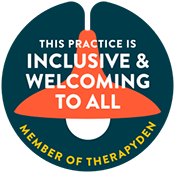Postpartum depression, simply referred to as PPD, is a serious mental health condition that affects many new mothers, often leaving them feeling disconnected, overwhelmed, and uncertain. The arrival of a newborn is typically a time of joy, but the emotional and psychological toll of this major life transition can be significant. Luckily, Cognitive-Behavioral Therapy, or CBT, is an evidence-based treatment that has been proven to be a highly effective treatment for PPD. CBT for PPD offers new mothers tools to manage their mental health symptoms, challenge negative thought patterns, and construct healthier coping skills. Whether you are struggling with PPD yourself or know someone who is struggling, understanding how CBT works can make a big difference in the journey towards healing.
In this blog, we will dive into everything you need to know about CBT for PPD. You will learn how CBT targets the root causes of depression, its benefits, and how it can be integrated into your mental health treatment plan. If you are ready to learn more about how CBT can help ease the challenges of PPD, keep reading!














